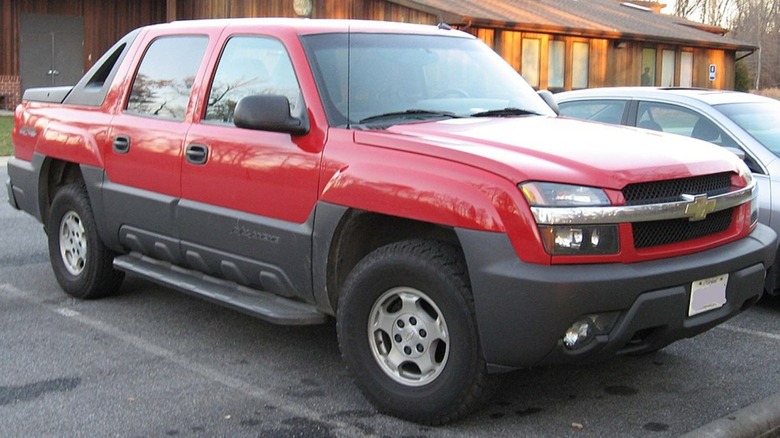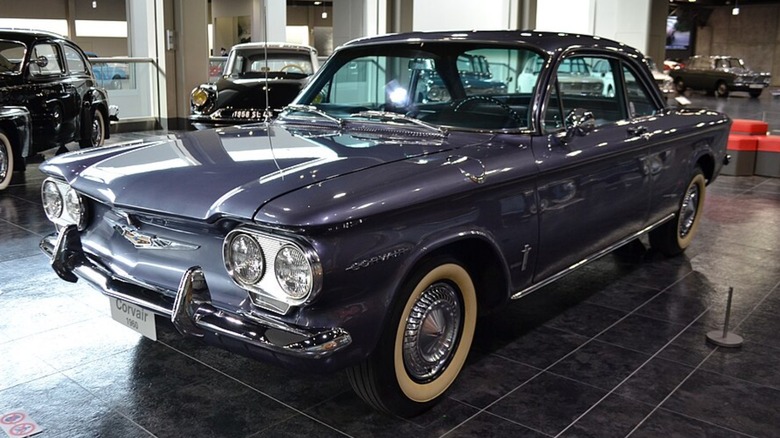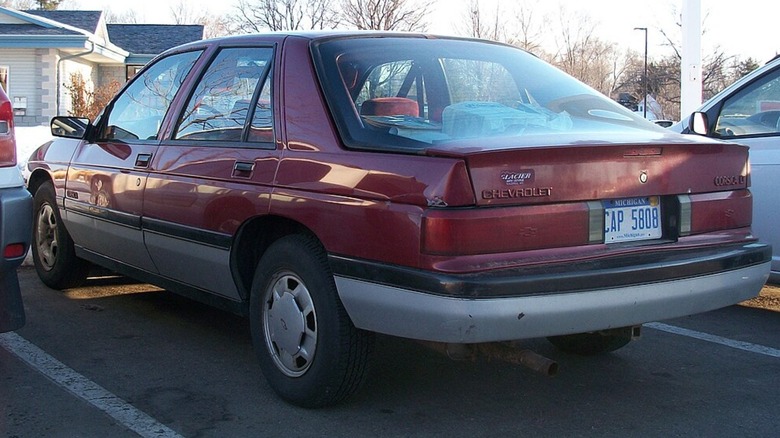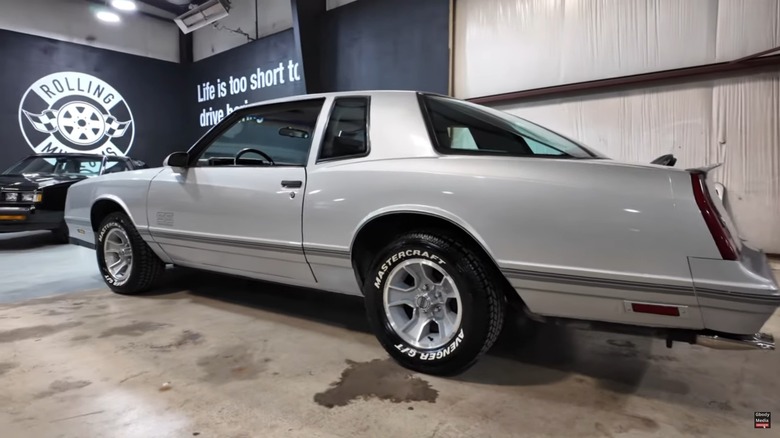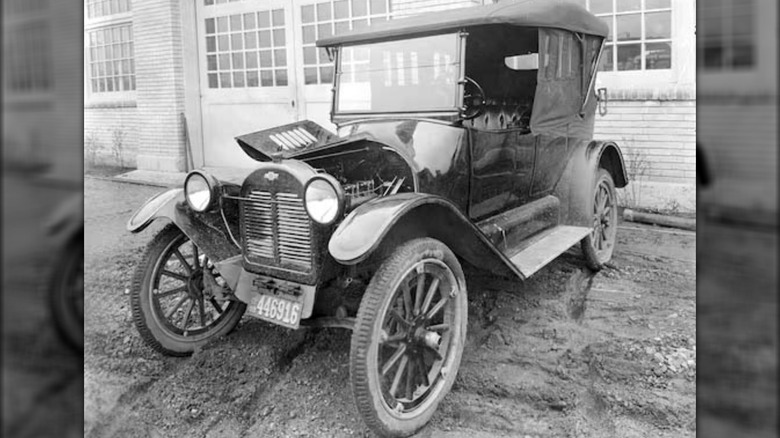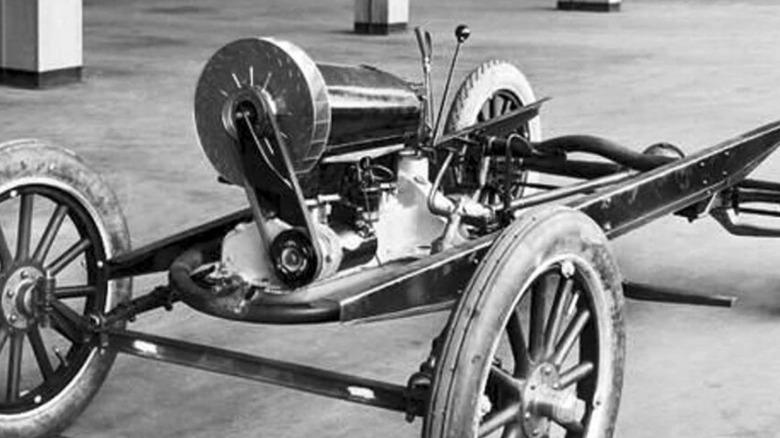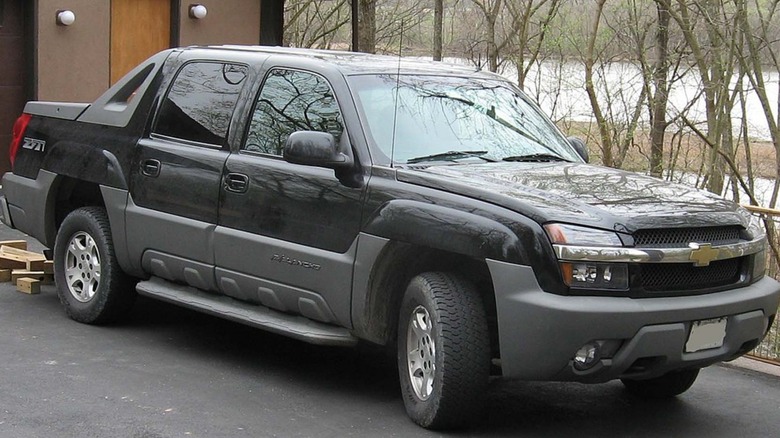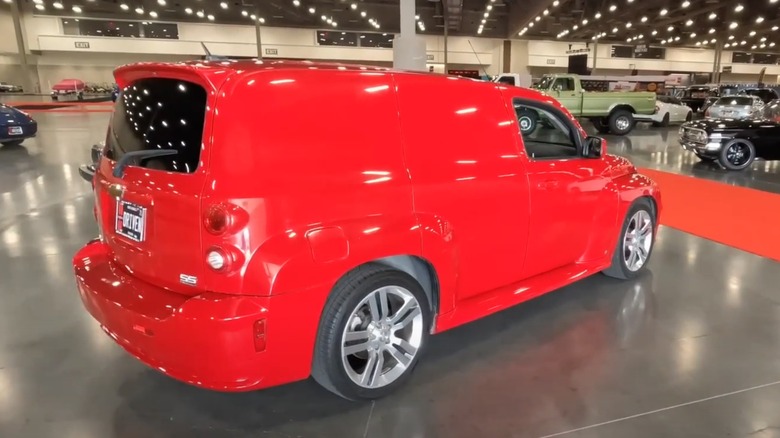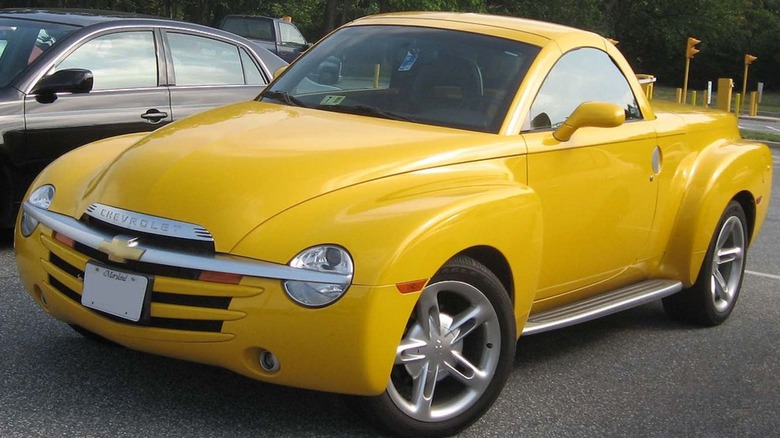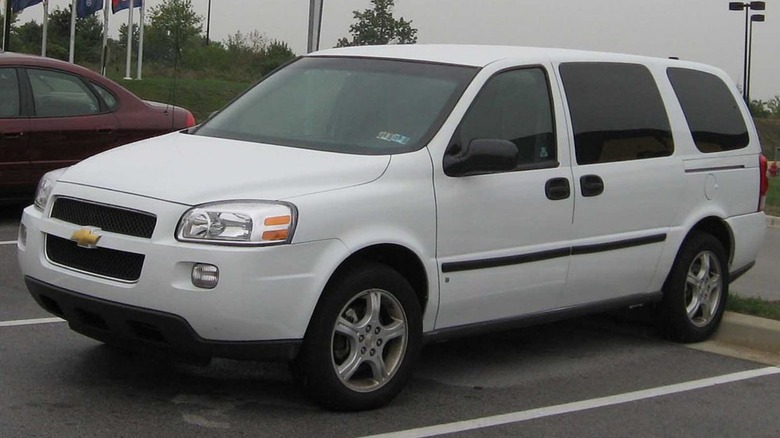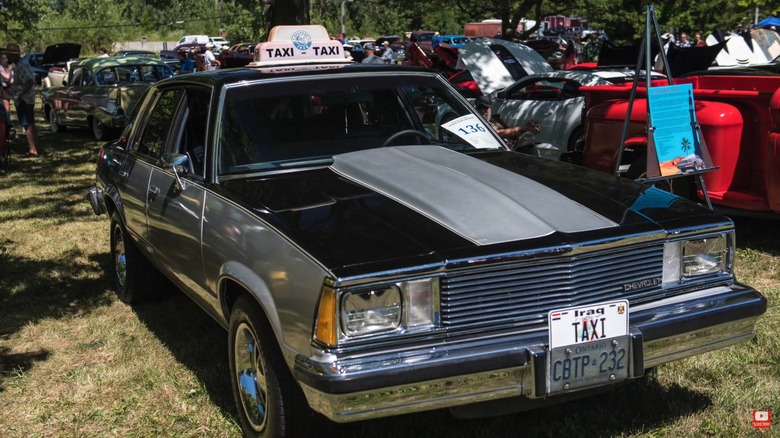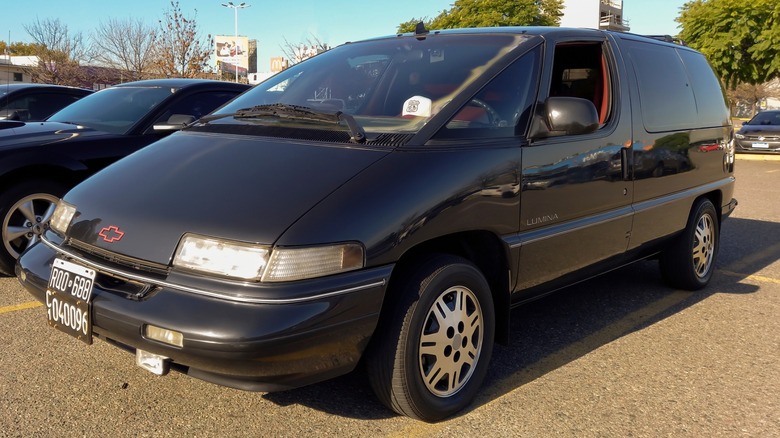10 Of The Strangest Chevrolets Ever Built, Ranked
As an American institution and a global corporation, few compare to the Chevrolet Motor Company in terms of its historical importance and integration into the fabric of American society. Its vehicles go beyond providing transportation and often elevate to the status of cultural icons, particularly as Chevrolet manufactures products meant to be affordable and attainable by everyday people. In its pursuit, Chevrolet has built cars and trucks with a style and design to make them attractive and desirable.
It would be hard to argue that a Corvette model of any generation is ugly or out of the ordinary. The same could be said for a classic Chevelle, C10 pickup, or even a late-model Tahoe. Looking through its long and storied history, it can be difficult to find examples of when Chevrolet took a swing and missed. However, it has happened and sometimes in a questionable and even inexcusable way. On a few occasions, even with cars that have completed the long and sometimes arduous process of bringing a new model to market.
The hundreds or thousands of people putting work into a new car, including various levels of management signing off on final designs, have collectively dropped the ball and set loose on the buying public cars that for various reasons could be perceived as strange in some way or another. Fortunately, this has happened infrequently, but these Chevrolet models represent Chevrolet's strangest creations listed with increasing levels of peculiarity.
Chevrolet Corvair
When the West German Volkswagen arrived Stateside, it failed to sweep the country as an import sales sensation, but thanks to the innovative "Think Small" ad campaign in the early 1960s, sales took off. In response to this encroaching competition, Chevrolet released the Corvair in 1960. Like the VW, it was powered by an air-cooled boxer engine sitting in the rear, making it inexpensive to manufacture and simple to maintain. Although the styling of the Corvair differed in many ways, and it was offered in multiple variants such as truck, sedan, and wagon, it compared closely to the Beetle.
Sales of the Corvair continued for nine years and Chevrolet sold hundreds of thousands of them, meaning it was a successful model for the company that maintains a loyal following today. It is also an attractive car that can be made to perform with the right amount of tuning and modification. It is a perfectly fine car that few might call strange. And it is not particularly strange, except for the fact that it came from Chevrolet. With a long history of making conventional cars with water-cooled inline engines in the front with conventional American styling, the Corvair is an oddball in the Chevrolet lineup. The boxer engine was discontinued with the car and no other air-cooled engine has been built since. In relation to traditional Chevrolet design and manufacturing, the Corvair is certainly a strange car.
Chevrolet Corsica 5-door
After having survived the Malaise Era of automaking and returned to making cars with decent power output thanks to improvements in technology by the 1990s, Chevrolet's engineering was being driven by innovation. However, it looks like styling had fallen in priority as blandness overcame the Chevrolet lineup. One example to try to prove this point is the utterly forgettable Chevrolet Corsica, a small car debuting in 1988.
The Corsica was small and light, powered by a fuel-injected 4-cylinder or V6. Its base price started under $10,000, and it offered little in the way of options or comfort. Regardless, Chevrolet managed to sell nearly 200,000 units per year and kept it around until 1996. It might be an okay car, but the exterior design displayed to everyone around you that you have zero interest in what you drive and will settle for blandness in exchange for frugality. Furthermore, those who wanted cargo space received an odd Corsica variant with the 5-door version.
Instead of making a sedan and hatchback variant, Chevrolet apparently removed the back glass and trunk from the sedan and slapped a big curved wrap-around piece of glass on the rear and a couple of hinges and a latch. This gave easy access to marginally more space than the trunk and left you with an already sad excuse of a car made odd with an ill fitting excuse for a hatch. Fortunately, most of these cars are now long gone.
Monte Carlo SS Aero Coupe
For years, automakers offered models in the personal luxury car segment that were large 2-door cars built with plenty of room and interior refinement. Although they are no more today, Chevrolet offered its buyers the Monte Carlo in this segment, and it proved to be a popular choice, lasting from 1970 through 1988, with a revival from 1995 to 2008.
While its name was meant to invoke the glamor and luxury of the area of the exclusive Monaco city-state for which it was named, the Monte Carlo SS model offered throughout the 1980s was built for performance. Eschewing the typical American treatment of shiny chrome all around, the SS model received color matched body panels more typical of the European cars found roaming around its namesake. With a high power output relative to its era, the SS offered a comfortable blend of luxury and performance.
In 1986, a variant called the Monte Carlo SS Aero Coupe was offered with an odd rear glass making the SS a fastback with a rear hatch. This was done to reduce drag as Chevrolet used this car for NASCAR racing and had to offer one to the public for homologation rules. While this likely helped on the track, street cars only had 180 horsepower and likely benefited little from this change. It did give the car an odd profile and weird proportions, but it remains highly collectible today.
Copper-Cooled Chevrolet
In 1923, the engineer who had developed the first electric starter for Cadillac, Charles Kettering, pushed Chevrolet to produce one of its most fabulous failures, the Copper-cooled Chevrolet. While most people may think the Corvair is Chevrolet's only air-cooled engine, it was not. However, it was the only air-cooled model built by Chevrolet and subsequently sold to the buying public. Kettering's creation did indeed go into production but was shut down before it got going.
Kettering came up with this car as a way to develop a low-cost model that would appeal to buyers looking for a basic car, and air cooling would make the engines cost much less to manufacture by eliminating the cooling system. Furthermore, although air-cooled engines with cast iron cooling fins were nothing new, Kettering chose copper for his higher conductive capacity. However, when the first car was sent for testing, the reports that returned with it were dismal. It failed. Nonetheless, development pushed forward.
To shorten a long and convoluted tale, the new air-cooled engine, which was slated to be used across General Motors divisions, went into production for the 1923 model year. The cars suffered from terrible pre-ignition, overheating, and power loss. The first 750 or so cars built were recalled and crushed immediately. It was an odd design for the company using an unorthodox choice of materials, marred by a series of bad management decisions, which was also strange for the growing and successful General Motors.
Chevrolet Avalanche
1918 saw the first truck from Chevrolet when it released its Model T, a half-ton truck with a 36-horsepower 4-cylinder. The introduction in 1929 of the Chevrolet "Stovebolt" inline-6 engine gave Chevy trucks an edge over competitors with 4-cylinder models, and Chevrolet has been dominant as a maker of trucks ever since. Known for being robust and reliable, Chevy trucks often lead the industry in innovation and style. But on occasion, Chevy trucks debuted with unorthodox designs.
The early 2000s saw automakers trying a lot of new things attempting to differentiate themselves from competitors. To that end, Chevrolet introduced for the 2002 model year a new truck with an identity crisis called Avalanche. While it had a truck bed integrated into the body out back, it was built as a sort of cross between truck and SUV. The Avalanche also offered extra seating with full-size rear doors, a feature not as commonplace as it is today, and it initially came with excessive and unsightly plastic body cladding. This left the Avalanche in an odd position having ample room for passengers but much less for cargo, especially considering the raised sides of the bed. However, like an SUV, Chevrolet included its Convert-a-Cab, aka midgate, allowing drivers to fold down the rear seat and window, extending the cargo area into the cab.
In reality, the Avalanche was a fine truck that served many. However, it used an odd design since discarded by Chevrolet, and that makes it a bit strange.
Chevrolet HHR SS Panel
At the dawn of the new millennium, automakers collectively flocked to nostalgia in many car designs, starting with the debut of the retro 1999 VW New Beetle. It was followed by cars such as the Plymouth Prowler, Chrysler PT Cruiser, the 5th-gen Ford Mustang, and Chevrolet's HHR.
Developed as a response to the PT Cruiser and even designed by the same person, the HHR, or High Heritage Roof, took its inspiration from the 1949 Chevy Suburban. Built with a long rounded hood sloping down to meet its wide and bulbous fenders, the retro look is unmistakable even though few people then or now likely longed for '49 Suburbans. Regardless, the HHR hit dealerships riding atop the same platform as the compact Cobalt and with the same engines and a similar range of options offered. However, the HHR is not the strangest thing Chevrolet has done in and of itself. It was an optional trim level that moves the weird meter.
Chevy offered the HHR in SS trim with a turbocharged and direct-injected 4-cylinder engine making a respectable 260 horsepower. This also is not so strange. What is an odd option is the HHR SS Panel option, which lacks a rear seat and windows as it is built for deliveries. Making a small car for deliveries is rational, but giving nearly 300 horsepower is not. It was only sold in 2009 and is extremely rare today, probably because a fast delivery van is a strange concept indeed.
Chevrolet SSR
The retro craze of the early 2000s touched nearly every automaker, and Chevrolet played its part as well. Not only did it release the moderately successful HHR, it revived the El Camino concept when Chevrolet released the retro designed SSR car-based truck in 2003. It sounds like a great idea. Capitalizing on a bit of nostalgia while resurrecting the El Camino-style platform should have been a hit. It was not.
Styling for the SSR, or Super Sports Roadster, took its cues from the late '40s just as the HHR did, including a sloping hood and distinct wide fenders sitting on either side. The Chassis was borrowed from the Trailblazer with a 6.0-liter V8 from the Corvette under the hood. While it had a bed like a truck, the roof was also a retractable hardtop, making sense of the Roadster part of its moniker. On paper and even during development, it seemed to have all the parts of a recipe for success. And then it went on sale.
When confronted with a $42,000 price tag in 2003, buyers balked, especially when they found out it was heavy and not too fast due to its 5.3-liter GM truck V8 — the Corvette LS V8 came two years later. In the end it was too expensive while being flat on excitement. And while the El Camino was endlessly utilitarian and stylish, the SSR was kind of an odd mix of neither. It failed with only 24,000 sold.
Chevrolet Uplander
Chevrolet released a minivan replacement for its Venture model in 2005. The outgoing Venture was a bog standard minivan which was not super exciting but did proper minivan things. The replacement in 2005 was called Uplander, and not much is written about it beyond contemporary reviews mostly because it was a boring minivan that people rarely care to wax poetic about.
Buyers who chose the Uplander when new received a vehicle built atop a standard minivan platform propelled by an unrefined and outdated V6 producing just enough power to move the van and kids but only while insisting on making an undue amount of noise while pushing its power through a mushy conglomeration of gears called a 4-speed transmission. In short, it had an engine and it moved. Inside, drivers were treated to a sea of cheap plastic with gray and beige tones to ensure no passengers received any notion of excitement, although that was likely headed off before ever stepping inside. It's the exterior that makes it strange.
If the Uplander were a child, it would be the one only a mother could love. Its long front end juts out from the minivan rear in such a jarring and unnatural way it's surprising any of these sold at all. Replacing a standard minivan for what was called a "crossover sport van" proved to be a terrible choice as it only lasted a few years. Its proportions were strange, and we are better off with it gone.
Chevrolet Malibu
Starting in 1964, Chevrolet offered the Malibu midsize car, offering it off and on until its departure in 2025. Most of the Malibus built over the years have been fine cars and some of them have turned into sought-after classics often featuring the most potent engine options from the muscle car era of the late '60s. Late-model Malibus have been reliable family cars and filled rental fleets. There is not much strange about the Malibu in particular, but one specific fleet of Malibus tells a very strange tale.
Though details are murky, Iraqi dictator Saddam Hussein wanted to order a fleet of Chevrolet Malibus but sanctions imposed by the U.S. after his violent rise to power prevented a deal directly with an American company. To get around them, GM arranged for its Canadian subsidiary to fulfill the order for 25,000 austere and utilitarian base model Malibus equipped with the 3.8-liter V6 and a 3-speed manual transmission. Heavy-duty cooling and suspension along with upgraded air conditioning were also chosen to cope with the extreme desert conditions.
The CBC reported that after 13,300 Malibus had been delivered, myriad problems were reported such that Iraq wanted to kill the deal, leaving a glut of 12,500 low-option Malibus in Canada. The remaining cars never made it and were offloaded at a discount to locals. Canadians were eager to pick up the discounted cars, dubbing them the "Iraqi taxi" or "Iraqibu." A few of these odd Malibus remain today keeping the legend alive.
Chevrolet Lumina APV
As Chrysler's minivan tore up the sales charts through the 1980s, the other domestic automakers looked on in terror as they missed out on potential sales in a new market segment. Responding with an oversized body-on-frame Astro van hardly worked for Chevrolet, leading to the development of a new GM U-platform for the divisions to use to build car-based minivans. A trio of vans from Chevrolet, Oldsmobile, and Pontiac came from the development.
Chevrolet's version took the name of its midsize car at the time, adding a descriptive acronym to differentiate it, making it the Lumina APV, or All Purpose Vehicle. Packed with 120 or 170 horsepower thanks to a 3.1 or 3.8-liter V6, the APV would not be winning any street races but could get the kids to soccer. Furthermore, with a sliding door and ample seating on three rows, the APV truly worked for all purposes, that is, if your purposes revolved around shuttling a family around town.
Widely called a dustbuster van for its similar shape to the handheld vacuum, the Lumina APV has a weirdly long nose with yards of glass over the equally long dashboard. How this van got into production is hard to imagine. Although the design is odd, the experience driving with the long dashboard is bizarre. The Lumina APV is a relic from a time full of automotive oddities, and this is Chevrolet's finest example of that.
